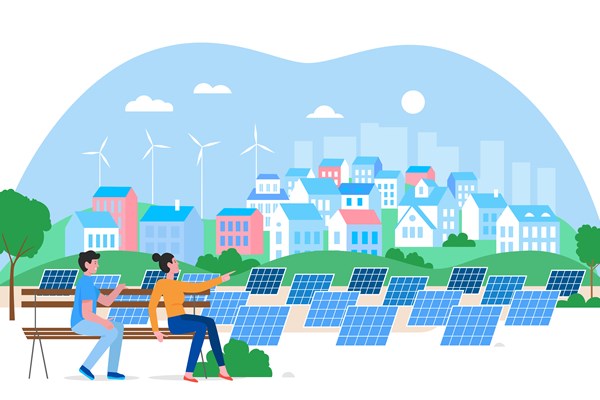Exploring benefit sharing options for community benefit packages
Aug 31, 2022

The essence of a clean energy community benefits package (CBP) comes down to what’s being offered. Most often, a developer or an electric utility will provide direct cash contributions as the community benefit, overlooking more meaningful or place-appropriate benefit sharing strategies. However, other benefits might include providing a community with grants, sponsorships, scholarships, or developing educational and cultural initiatives. Benefits could also include innovative options for financing and owning the project, such as community co-investments. A developer may also find it appropriate to offer different benefits to different community segments.
In Hawaiian Electric’s Stage 3 Request for Proposal (RFP), developers are required to make a minimum annual contribution of $3,000 per megawatt (MW) of renewable energy for the duration of the Power Purchase Agreement (PPA). To put this into context, we’ve provided some figures below.
|
Project Size |
PPA Term |
Annual Contribution |
Total Contribution |
|
3 MW |
20 years |
$9,000 |
$180,000 |
|
5 MW |
20 years |
$15,000 |
$300,000 |
|
10 MW |
20 years |
$30,000 |
$600,000 |
|
20 MW |
20 years |
$60,000 |
$1,200,000 |
While most research has shown developers, on average, make a cash contribution between $1,000 and $1,500 per MW, using the generic cost estimates for the project examples above, the minimum community benefit contribution set by Hawaiian Electric — $3,000 per MW — may only slightly increase the cost of renewable energy for ratepayers. Based on the examples used, the cost of renewable energy may increase by roughly 1.4%.
|
Project Size |
Total Project Cost |
Total CBP Contribution |
PPA Price without CBP Contribution |
PPA Price with CBP Contribution |
|
3 MW |
$15M |
$180,000 |
6.2 cents |
6.2 cents |
|
5 MW |
$20M |
$300,000 |
8.5 cents |
8.6 cents |
|
10 MW |
$40M |
$600,000 |
11.5 cents |
11.6 cents |
|
20 MW |
$80M |
$1,200,000 |
15.0 cents |
15.2 cents |
In addition to the minimum requirement, project bids are scored higher by Hawaiian Electric if developers intend to offer additional community benefits, such as commitments to using local labor and paying prevailing wages, creating jobs, or improving aging infrastructure throughout the affected community.
Examples “Down Under”
The novel benefit sharing strategies below are intended to serve as a reminder that a spirit of experimentation, a willingness to listen, and prioritizing the local context will deliver a range of desired benefits beyond what’s commonly offered.
The Dundonnell Community Mini Grid Program. In 2018, Tilt Renewables sought feedback from the Dundonnell local community in Victoria, Australia, about what they would like to see as benefits from the project. The most common response was a desire for cheaper electricity prices. While the existence of a wind farm next door to a home cannot directly impact the cost of energy to that resident, Tilt Renewables set out to develop a concept that aligned with the company’s values, resources and skill set. The Dundonnell Community Mini Grid program gives eligible owners the opportunity to participate in a renewable electricity project that consists of the installation of a solar PV system coupled with a suitably sized battery at a discounted price. Tilt Renewables subsidizes each system with a lump sum payment of $15,000 per installation, no matter what the total install costs are. The program has been offered to 35 owners (those within 3.1 miles of the wind farm and then progressively extended to a greater distance if the initial owners decline to participate). In addition, Tilt Renewables has offered to fully fund a solar PV and battery system for the Dundonnell Country Fire Authority.
Upper Lachlan Foundation. In New South Wales, Australia, The Upper Lachlan Valley Foundation was established by local residents to “improve the social capacity of the communities of the Upper Lachlan by providing a secure platform and income stream for local community, health, sporting, educational, environment, religious and other groups, associations and bodies.” The foundation seeks to make the best use of multiple sources of local funding, including contributions from nearby wind farms and local donors. Through the foundation, the community is creating a lasting impact with community benefit funding. Money received by the fund is treated as capital that is preserved in perpetuity. The foundation, via the Public Trustee for the Australian Capital Territory, invests all money provided to it, and the interest is paid out as grants to community causes. Two local wind farms have made contributions to the foundation.
Demark Community Wind Farm. In Western Australia, a local environmental organization was gifted 200,000 shares for sweat equity related to community engagement activities. The returns on these shares contribute to a grant program run by the organization.
Hornsdale Wind Farm. In South Australia, renewable energy developer, Neoen, developed strong working relationships with local aboriginal organizations in the early feasibility stages of the Hornsdale Wind Farm and worked with the Nukunu and Ngadjuri people throughout planning and pre-construction of the project. Neoen worked collaboratively with both groups to develop Cultural Heritage Management Plans. Stemming from this relationship, Neoen commissioned local indigenous artists to do artwork for two of the turbines. The artwork tells the story of the land and the ongoing connection that local indigenous people have with it.
Read other entries in our Community Benefits Package series:
- Setting a common agenda for clean energy community benefits (June 28, 2022)
- Where the benefits begin: Defining a host community (July 28, 2022)

